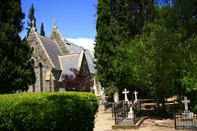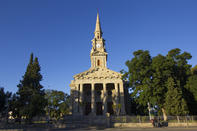From Dutch to Deco
Cradock has an array of well-preserved 19th-century buildings. The centrepiece and flagship is the Dutch Reformed Moederkerk (built in 1868) which was modelled on St Martin in the Fields in London. With its lovely proportions, yellowwood interiors and pulpit of Burmese teak, this is one of South Africa’s most impressive places of worship.
Exploring the old part of town, you’ll find architectural gems on every street, from Georgian and Karoo style, to ornate Victorian and Deco. The Schreiner House is a must, but also try to have a look at the Cape Dutch ‘Mulberry Shade’ house, the Victorian Heritage House (an excellent B&B) and the neo-Gothic Anglican church on Breë Street, the town museum on High Street and the Jurie Lombard watermill (1863, restored and relocated in 1972) in the municipal park.
Schreiner House Museum
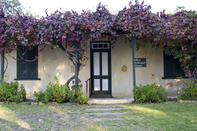
If you've heard of Ralph Iron, you might have heard of the author of ‘The story of an African Farm’. And here you thought it was Olive Schreiner...Back in 1883 when Schreiner went to London to try and get her first book published, no-one would touch such a provocative work by a woman, so it was published under a pseudonym.
It's now considered to be the 'first truly South African novel' and in 2004 was made into a movie with a star Hollywood cast. Once you've read this, move on to Women and Labour, which she wrote when she lived in De Aar. Schreiner's house at 9 Cross Street in Cradock, one of the oldest buildings in town, is now a museum devoted to her. The house has been beautifully restored to the period Olive lived there. An extensive pictorial exhibition portrays her life and those of her eminent siblings. An adjacent bookshop sells all her books as well as a good selection of South African literature. Schreiner is buried outside town on Buffelsfontein Mountain along with her husband SC Cronwright, her infant daughter, and her dog Nita (get a map of how to get there from the museum).
In accordance with her wishes, Olive, her husband Samuel Cronwright, their baby and dog were buried on Buffelskop, about 20 kilometres south of Cradock. It’s a stiff walk to the top of the mountain, but the sumptuous views make up for the slog. In every direction are flat-topped koppies rising above an earth veined with seep lines. The grave is in the shape of an igloo-like sarcophagus (the ground was too rocky to dig a hole). Collect a gate key and a map from curator Brian Wilmot at the Schreiner Museum.
The Cradock Four
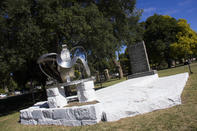
As you approach the town from Port Elizabeth on the N10, an imposing concrete monument looms on a rise to your left. This is the Cradock Four Garden of Remembrance, paying tribute to the ultimate sacrifice of anti-apartheid activists Matthew Goniwe, Fort Calata, Sparrow Mkhonto and Sicelo Mhlawuli. It’s a forbidding edifice, usually locked behind razor wire.
More intimate and moving is the tribute to these heroes of the struggle in the town itself. The Cradock Four annex to the town’s museum looks at the life and times of these leaders, killed by the security police in 1985.
In the municipal park you’ll also find the Flame of Hope and Liberation Monument in memory of those who died in the struggle. Beside it, and rather bizarrely, there’s a small replica of the Voortrekker Monument commemorating the Uys trek of 1838. The Great Fish River Museum is housed in the former Dutch Reformed parsonage (1848) and offers a good collection of town memorabilia.
Other Significant Buildings
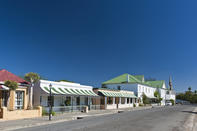
Die Tuishuise and Victoria Manor Hotel complex on Market Street is also of significance. Owner Sandra Antrobus is passionate about restoration and has converted a whole street of tuishuise (houses used by farmers when they came to town for nagmaal or business) into delightful self-catering accommodation.
By Justin Fox
